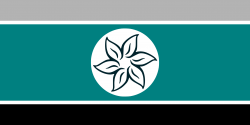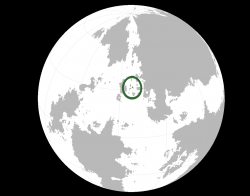Archive:Sialia
| The Confederation of Sialan Emirates Njanêj Sjálâde Falâjýfe |
||||||
|---|---|---|---|---|---|---|
|
||||||
| Motto: "" | ||||||
| Anthem: '' Royal anthem: For Sialia |
||||||
| [[File:|center|250px|alt=The Locaton of Sialia on Sahar|The Locaton of Sialia on Sahar]] The Location of Sialia on Sahar
|
||||||
| Capital and largest city | Orefelia (Sial. Ôrëfelijá) | |||||
| Official languages | Sialan, Laefëvêši | |||||
| Recognised regional languages | Church Sialan | |||||
| Demonym | Sialan | |||||
| Government | Federal semi-presidential constitutional oligarchy | |||||
| - | President | |||||
| - | Premier | |||||
| Legislature | Assembly | |||||
| - | Upper house | Emirate Council and Board of Islands | ||||
| - | Lower house | National Assembly | ||||
| Independence from Laefevia | ||||||
| - | Sialia becomes a part of the Laefevian Empire | 270 | ||||
| - | Sialia gains semi-autonomy from Laefevia | 1515 | ||||
| - | Sialia gains full independence from Laefevia | 21 March 1896 | ||||
| Area | ||||||
| - | 177.185 km2Land & water 68 sq mi |
|||||
| Population | ||||||
| - | 2016 estimate | 3,143,218 | ||||
| - | 2015 census | 3,138,287 | ||||
| - | Density | 177.185/km2 458.9/sq mi |
||||
| GDP (PPP) | 2016 estimate | |||||
| - | Total | 51246 | ||||
| GDP (nominal) | 2016 estimate | |||||
| - | Total | 32600 | ||||
| - | Per capita | 47630 | ||||
| HDI (2015) | 0.945(GNII = 0.992; EPI = 0.942; LEI = 0.900) very high |
|||||
| Currency | Sialan Sênam (SLS) | |||||
| Time zone | WŠT (SCT-1) | |||||
| - | Summer (DST) | not observed (SCT) | ||||
| Antipodes | Marine, Asura Ocean | |||||
| Date format | dd.mm.yyyy | |||||
| Drives on the | left | |||||
| Calling code | +290 | |||||
| Internet TLD | .si | |||||
Sialia (IPA: /siʲɑ:liʲə/, Native language: Sjálâ, IPA: /sʲa:liʲ'a/), officially The Confederation of Sialan Emirates, is a country located due West of Laefevia, in the Dragon Sea, near the Šarkunen peninsula.
Etymology
The native name, Sjáliâ is a contraction of the noun sjál (meaning garden), and the country suffix -iljâ. Thus, in ancient times, the country would have been known as Sjáliljâ (lit. country of gardens).
History
Geography
Geology
Sialia is dominated by its volcanology. Formed by a series of shield volcanoes, it is composed of mainly basaltic rocks which give its cliffs a distinctive black colour. Some areas are still volcanically active, leading to the use of geothermal power in the magmatic fissures (see #Energy, below). Much of the coastline is composed of harsh cliffs, with caves carving into the sides. In areas eroded by the sea, however, bays are formed with shallow beaches, protected from the ocean.
Climate
Sialia’s climate varies with wind direction. It has an average temperature range of 10-35 °C, with 725-974 mm per annum of rain. If the wind blows from the north or south, the climate is noticeably wetter due to winds over the sea. From the East and West, Sialia is sheltered from the worst of the weather, creating a drier climate during the summer. It is comparable to the Mediterranean climate (on Earth), particularly areas around Sicily or southern Italy.
Biodiversity
Phytogeographically speaking, Sialia is in the Boreal kingdom. Dominated by open plains, and populated with olive trees and other hardwoods in the flatter areas, Sialia has a rich phytodiversity. Higher up on the volcano slopes, however, the land turns more to scrub, with short bushes dotting the rocky landscape.
In terms of animals, cattle ranching is often practised inland, leading to large pastures of the hardy grass which is found on these islands. Another notable feature of the Sialan biodiversity is the Sialian Turkey Crab.
Politics
Main article: Politics of Sialia
Government
Sialia is a federal semi-presidential constitutional oligarchy. The Sialan Government is split into 3 branches: executive, legislative, and judiciary.
The nominal head of state is the President, who is elected by the Parliament for a five-year term. The duties of the President are largely ceremonial - it is he/she who is responsible for formally electing the Premier. The President also appoints Board Leaders, on the advice of the Premier. The Premier is the head of Government, and exercises executive power along with the National Assembly and the Board of Islands.
The legislative powers are carried out by the 50-delegate elective unicameral National Assembly. This is the form of representative democracy present in the country. Elections for National Assembly Delegates (NADs) are held biennially, and approximately each 2 prefectures nominates 1 delegate.
Judicial matters are dealt with by the three Courts of the Islands, which range in importance. It is very frequent for Primary Judges to also observe (and correct) the debate in the National Assembly.
Administrative divisions
Sialia is split up into 5 Emirates (Déjniljâ, Nórëmiljâ, Krajliljâ, Ønjâ, and Pitësiljâ). Each of these are partially autonomous, and is ruled by an Emir (Sialan: nján). The sixth division is the Capital City (Ôrëfelijá), which follows the national laws, and (where there are gaps) those of the surrounding Emirate (Déjniljâ).
Each Emirate is further divided into prefrectures, but these are purely for administration in local governments, and for electing National Assembly Delegates.
Foreign relations
Military
Economy
Imports
Exports
Aside from fishing and tourism (the several volcanoes which make up the islands are incredibly popular with holidaymakers), Sialia’s main export is the Sialian Turkey Crab.
The crab tastes of something you have just scraped off your boot and even with proper cooking has the texture of a car tyre, however it is only found off the cliffs of one of the islands and so is incredibly rare, making it a global delicacy and so highly sought after. It was almost fished to extinction in the 1800s, however highly strict rules have since been put in place to protect it and numbers have bounced back.
Transport
Energy
Sialia has pledged completely carbon-neutral in its energy production by 2020, thus creating all of its power from geothermal and wave energy.
Science and technology
Tourism
Tourism is instrumental to the Sialan economy: the picturesque views, and intriguing volcanic slopes prove to be very popular with international tourists.
Several of the island bays are heavily pedestrianised, and have expansive holiday resorts, usually with private beaches. Also, the Sialan government limits their air passenger duty during peak seasons - further boosting tourism. Several resorts also offer ways to explore the rich marine life that Sialia hosts, like glass-bottomed boat journeys, scuba-diving courses, and elementary lessons in marine biology.
Demographics
Ethnic groups
Urbanisation
Language
The language spoken in Sialia is Sialan (natively: Sjálâ). It is related to Læfêvëši, the language of their neighbours - both are daughter languages of Proto-Enkean (a reconstructed langauge).
Education
Healthcare
Religion
Culture
Heritage
Architecture
Much of the architecture on Sialia is white plaster walls with shallow terracotta roofs, although domes or flat roofs are not uncommon.
The traditional form is that of a half-sunken basement forming the ground floor, to shelter from the sun. The windows themselves are heavily shuttered to protect against the midday sun and the storms which occasionally blow in from the south. Balconies are prevalent on top of an extended section of basement, creating a decking raised just above the ground. Entrances are half lowered into the ground, level with the basement, with thin slit windows placed horizontally across this basement to look out across the ground.
Often the houses will have a small tower to catch the wind which blows across the islands in the Earthly Middle-Eastern style of a wind tower, to cool the houses and sometimes create extra living space, although the main body of the house is usually a two-storey dwelling. These are known as Windcatchers (Sialan: lôjsëlerikán).
Literature
Art
Music
Theatre
Film
Cuisine
Religion
Sport
Mythology
The most popular mythological creature, rumoured to have existed on Sialian soil long ago is the Sorcerer's Snake. This is a rainbow coloured snake, and is now seen as a symbol of equality throughout Sialian society.
Symbols
The main national symbol in Sialia is the floral emblem that features on the National Flag. This is used heavily by patriotic citizens and on all official documents.
Each Emirate also has a symbol, this time faunal, which is borne on their flags also. These are used only by local governments.
Another national symbol is the Sialian Turkey Crab, which is an indigenous (and endemic) delicacy - highly priced, and highly sought after by foreign culinary experts.

